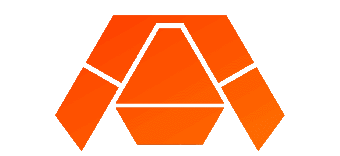By: Yakub Dure
Based on the table below, the group chose to do 3-D printing. The reasons are as follows:
Cost: The group is on a budget and by choosing 3-D printing the budget has been reduced by ~$100.
Time: The group has come into a couple issues in size the 3-D parts as detailed in father down in the blog and has had to go through a few iterations.
The ability to customize: The group needed to re-size the parts to fit micro servos and as such had to redesign the skeleton of the micro Biped.
| Advantages of 3-D printed parts | Disadvantages of 3-D printed parts | Advantages of a molded material | Disadvantages of a molded material |
| In 3-D printing parts are quicker to produce then through the curing process in molding.
The 3-D printing allows for a wide variety in customization of the products due to the template for the print. Template for the print is based off of a customer SolidWorks file. It is also far cheaper to produce then molding as the only material needed is the plastics and the printer can just be rented for a nominal fee ~$30. | The primary issue is strength. It is not as durable nor as strong as a molded piece.
Since the printers available can only use a select number of material for printing, the material is limited primarily to plastics. The other issue that occurs is temperature sensitivity. All plastics are made by a thermal needle heating the material to “melt” them and then output them in the correct structure. This means on hot days the plastics can melt. The last issue that is prominent is the size limitation. The printers available can only print so large, therefore the project is limited to the size of the size of the printer. | The main advantage of molding lies in its strength. Molding gives the objects a stronger chemical bond, because unlike 3-D printing it does not layer the plastics or material.
The molding process creates a more durable component that is more resistant to outside forces and temperature fluctuations. Molding also gives a wider range of material, as long as the material can be melted and poured into a mold it can be used. | The primary disadvantage to molding is its cost. Molding is very expensive because of the components necessary to the process.
It can also be extremely time consuming and if any errors occur it is not as simple as reprinting the part. One has to recreate the piece that will be used to create the mold. The last issue is in customization. It is hard to customize compared to 3-D printing. |
Issues with 3-D print
The group ran into a problem during the 3-D printing of the components. While the PLA provided for accurate parts, the designer did not account of the placement of the wires from the servo. This meant that while the parts provided a snug fit, the servo could not fit in the band because the wire from the servo would not allow the servo to fit.
See picture below.
How were the issues resolved?
Originally, the group was going to redesign the parts to fit the servo however due to the change in servo the issue resolved itself. The resolution occured when the new servo was bouht the wire placement on it was different from the previous servo. Rather then on the side like the MG90S, it was on the bottom presenting no interference with the parts, MG92B.
See picture below.
SOURCES:
1.ABS. Stratasys Inc. (2007).
2.Imre, B. Renner, K. Pukanszky, B. “Interactions, Structure nad properties in poly(latic acid)/thermoplastic polymer blends.” eXPRESS Polymer Letters Vol. 8, No. 1 (2014) 2-14. WEB
3.https://www.nde-ed.org/EducationResources/CommunityCollege/Materials/Structure/polymer.htm


